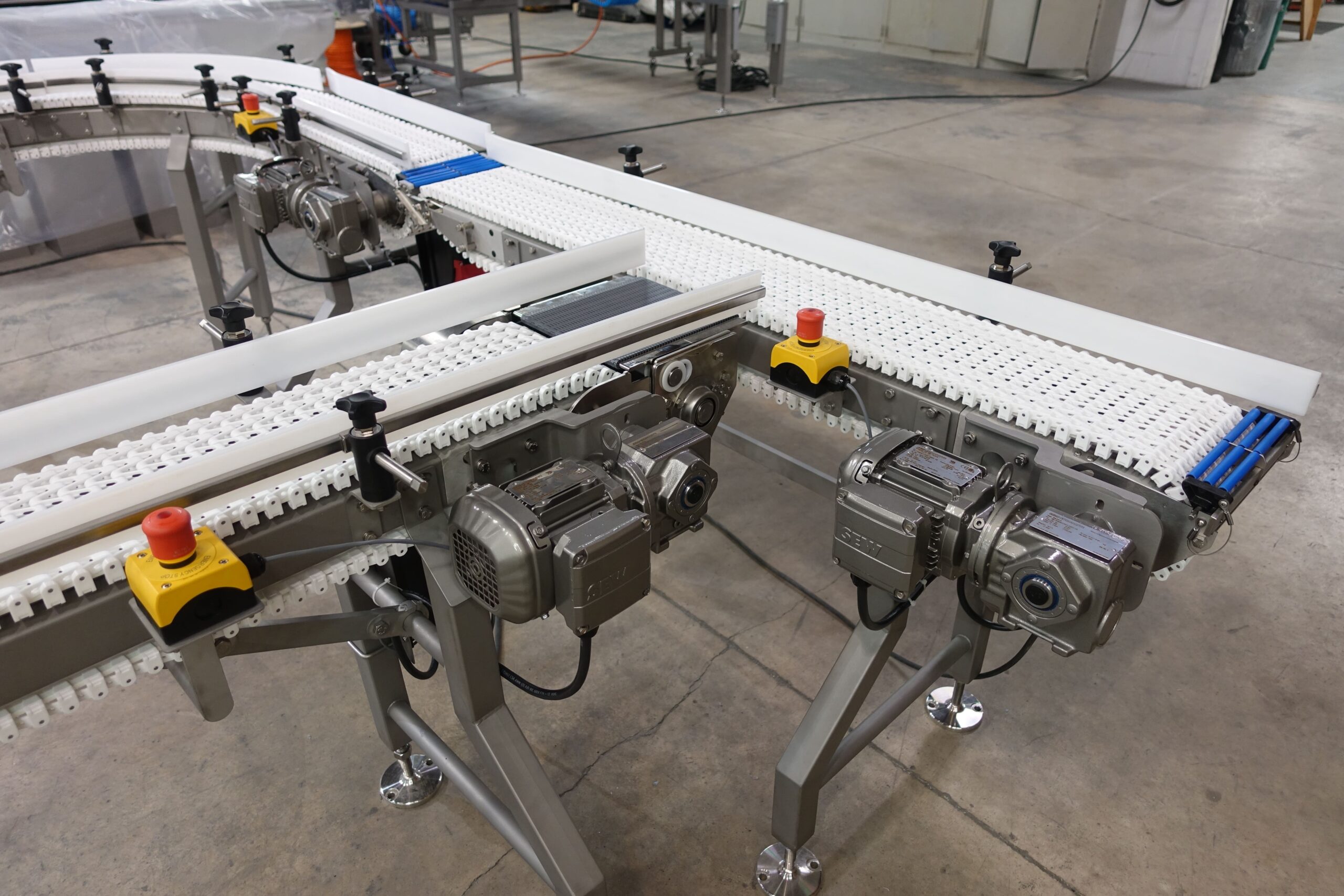Manufacturing plants have gone through a transformation over the last fifty years with the implementation of various conveyor systems and the technology associated with them. Industrial conveyor systems can be found in all types of industry. They provide an automated way of transporting inventory and materials from one point to another in the same facility. When considering the implementation of a new conveyor system, it is important to ensure the design meets all of the needs associated with transport of the products along the line. An indexing conveyor is one type of conveyor system which focuses on moving a product a specific distance in a step-by-step fashion. These are employed in a variety of applications which can increase the productivity of the production line. It provides precise movement for either manual or automated assembly.
While many people might associate conveyor systems with moving small products very quickly, they are also employed in the automotive industry, moving vehicle chassis and other large pieces of equipment safely and reliably. Material handling systems are vital to successful manufacturing ventures.
Types of Indexing Conveyor Systems
- Screw Conveyors
- Aero-Mechanical Conveyors
- Bucket Elevators
- Pneumatic Conveyors
- Belt Conveyors
- Chain Conveyors
- Cable Conveyors
We offer the various types of indexing conveyors from the best manufacturers such as QC Conveyors.
Screw Conveyors
Built to handle semi-solid materials, screw conveyors are the first type of conveyor system invented. Archimedes developed this in ancient Greek times. The handling rate is directly related to the rotation speed of the auger. While these are widely used, they do have poor efficiency in steep inclines.
Aero-Mechanical Conveyors
This type of conveyor uses centrifugal force to operate. The material is used by way of circulated air. They are flexible and easy to operate in a vertical or horizontal manner. They can be a detriment the product integrity due to the high velocity of the air used to move product.
Bucket Elevators
This is a vertical type of conveyor, moving materials such as grain or fertilizer in an upward direction. This type of conveyor is highly efficient because of the low amount of power needed to operate but also expensive to maintain and difficult to clean.
Pneumatic Conveyors
The four basic elements of pneumatic conveyors are:
- Air Source
- Convey Line
- Device for Feeding Material
- Air-Material Separator
They use air to move dry materials from one area to another using alternating positive air pressure and negative air pressure or a vacuum. The materials best suited for this type of conveyor system are as follows:
- Sugar
- Starch
- Wheat Flour
- Food Products
- Sands
- Metal Powders
Belt Conveyors
The most common type of conveyor system, belt conveyors are used in almost every industry. They can be seen in a variety of places such as:
- Airport Luggage Handling
- Restaurants
- Ski Centers Moving Skiers Up and Down Slopes
They are widely used as an enclosed unit, as well as, an open one which can be used in assembly line settings. They are also a great choice of conveyor system when transporting heavier loads.
This type of conveyor can come in various styles such as a low-profile belt conveyor. This can help in various situations where space is of concern, as well as, for certain types of packaging is needed.
Chain Conveyors
A chain conveyor uses a chain to transport material down the production line. They typically are employed for heavier materials such as industrial containers, pallets, and grid boxes. They also are used to transport parts through paint plants because paint can be applied more easily than on a belt system.
These are mote frequently used conveyors in indexing conveyor systems. They are easier to maintain than some systems, because a single chain can be replaced without needing to replace the entire system.
The drawback to chain conveyors is the fact that they require a lot of energy to operate and also shouldn’t be used in bulk materials because food and other materials can accumulate on the chains which can lead to contamination of the production line.
Cable Conveyors
These conveyor systems are excellent to preserve material integrity and minimize the likelihood of contamination. They process material through tubes with a flexible coated cable drawing the material through. These are excellent systems offering unparalleled flexibility when it comes to transporting materials. They can be used to move products in the following ways:
- Vertically
- Horizontally
- At Various Angles
- Around Corners
These systems are modular in design which makes them easy to maintain. Components are removable and easy to clean and maintain. They have low energy costs because of the small motors needed to move materials.
They are typically employed for the following materials:
- Specialty Grains
- Pet Food
- Coffee
- Snack Foods
- Breakfast Cereal
- Nuts
- Frozen Food
- Powdery Materials
- Fluff Plastic
- Specialty Needs
- Biomass
- Beans
The Best Indexing Conveyor System
Unfortunately, the best conveyor system is going to be determined by various factors. Some of those are listed below:
- Type of Material
- Floor Space
- Maintenance Costs
It is important for indexing conveyor systems to connect processing steps to improve productivity and efficiency across the production line. Any conveyor system should reduce the product travel distance and time. This helps to provide smooth production environments offering material flows and high throughput.
Modern day conveyor systems are sleek and flexible machines. They are not the conveyor systems of the past. They can fit in small locations and use all available vertical space as well. With indexing conveyor systems, with multiple stops along the production line, it is important that all sections of the system operate in concert with one another to ensure proper handling of all materials.
Trends in Indexing Conveyor Systems
- Low Noise Systems
- Flexibility
- Maximizing Afforded Space
Low Noise Systems
Any warehouse or manufacturing setting is going to be noisy. With high ceilings and little sound absorption efforts, sound can reflect and bounce throughout the area. Adding a noisy conveyor system to the mix can create a variety of problems. Noise can be distracting and dangerous. Workers can become distracted which can potentially lead to dangerous situations. Modern-day conveyor systems are built to run quietly. It helps workers to be efficient and safe with quieter equipment.
Flexibility
When space is limited, it is more important than ever that conveyor systems be able to offer flexibility. They need to be flexible enough to handle chances in the material being moved from location to location. They also need to be able to change the rate of processing when the type of material processed is changed. With modular design, new conveyor systems can be adjusted and moved within the space available.
Maximizing Afforded Space
Conveyor system technology has afforded production line manufacturers with the ability to work more efficiently in less space than every before. This will continue to be the case as technological advances continue to make conveyor systems even more efficient than they are today.
Final Thoughts
It is important that the system maximizes the space. With modular designed conveyor systems, it is easy to fit an efficient system in any sized space. Modular design also means, they can be quickly adapted to changing materials and packaging needs for various industries.
We are one of the leading QC conveyors distributors and can meet any and all conveyor system needs you may have. Whether is an indexing conveyor or a low-profile conveyor, we should be your first call. Why not reach out to us today? We are your conveyor system partner. Reach out today for more information.













































